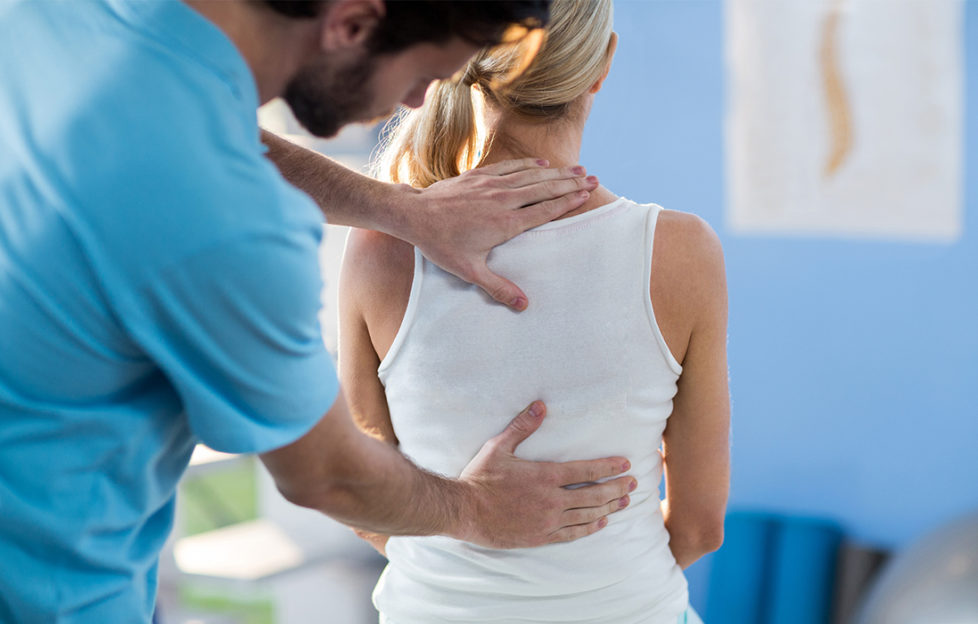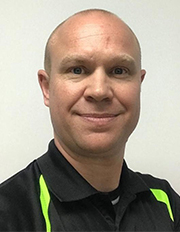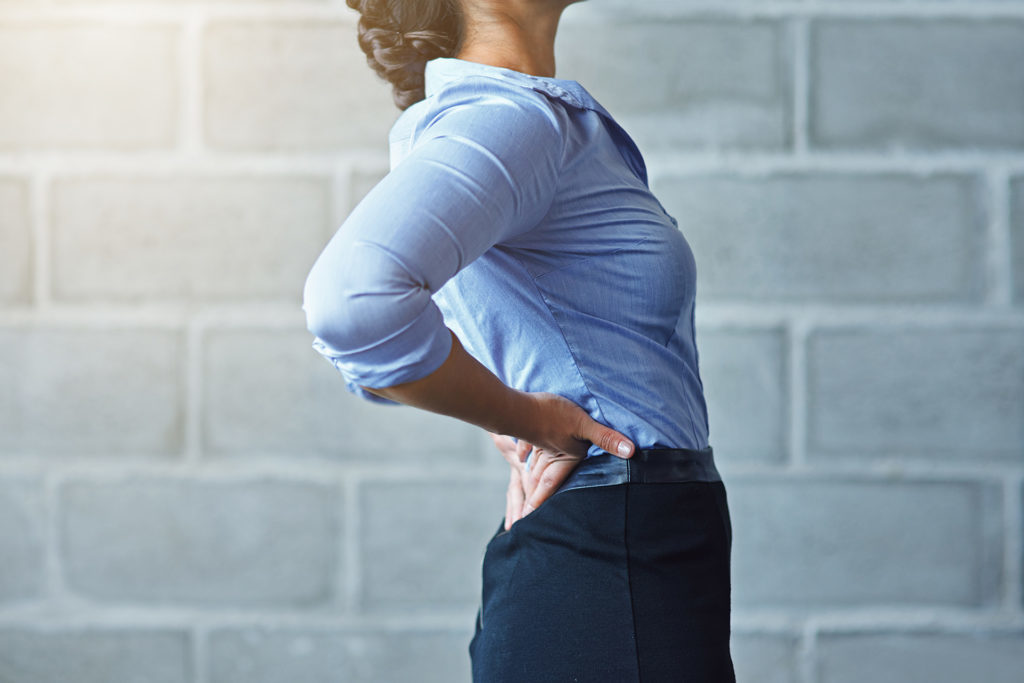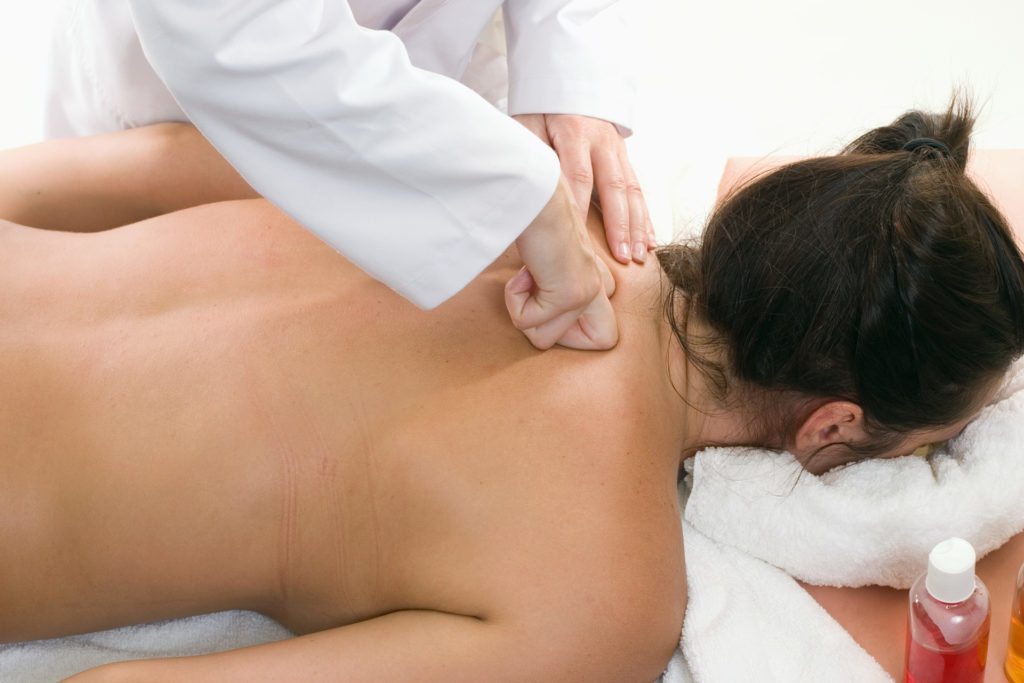Herniated Discs – What Are They? Can You Treat Them?

 By Osteopath and IDD Therapy provider Stephen Haynes,
By Osteopath and IDD Therapy provider Stephen Haynes,
clinical director of Active Therapy Clinic in Cirencester
The first time most of us hear the term “herniated disc” is from a doctor or therapist, after finding ourselves in excruciating pain!
Fortunately, the majority of herniated discs can be treated without surgery.
So, what causes a herniated disc and how can non-surgical treatments aim to resolve this condition?
What is a spinal disc?
A spinal or “intervertebral” disc sits between the bones of our spines. In order to bend our spines and cushion the vertebrae, the discs act as shock absorbers sandwiched between the vertebrae.
The discs consist of an outer wall made of collagen and the centre of the disc is called the nucleus pulposus, which is made of a toothpaste-like substance.
At birth, the nucleus is made of 80 per cent water and this percentage reduces as we age. The discs are very strong, slightly spongy and provide cushioning.
Looking after your discs
The most important thing we can do to look after our discs is to move, have good posture and to drink plenty of water. Here are some reasons why:
- Discs help to support the pressure of our body. If we don’t move, the constant pressure pushes the nucleus of the disc against the outer wall and weakens it.
- The discs absorb water from their surroundings. If they’re under constant pressure, they cannot absorb water.
- Without water the discs lose some of their hydrostatic pressure. So they lose their shock-absorbing properties.
- As discs lose water, the walls of the disc can dry out and weaken. This makes them less able to keep the nucleus inside.
- Bad posture makes things worse. If we slouch over, we put a lot of pressure on the discs at the base of the spine.
- When we slouch in one position… we squash the front side of the disc and the nucleus of the disc is pushed back hard against the rear of the disc.
- If the surrounding muscles are weak… pressure can be exerted meaning there is less support for the discs and they’re squashed even more.
- Our back and “core” muscles provide essential support to keep the spine supported and strong, which takes excess pressure off the discs.
- Our discs are made of collagen, which is the same material as in our skin. Water in the body is essential for the collagen in our discs and without enough water the disc walls will dry out and weaken.
When a disc herniates
When the nucleus of a disc pushes out and actually passes through the walls of the disc, it’s called a herniated disc or disc herniation.
The spinal column houses the spinal cord and, at each level of the spine, nerves branch off from the spinal cord.
The discs separate the vertebrae and allow space between them for these nerves to travel to the different parts of our body.
If the disc herniates, the nucleus can press against one of the nerves and this pressure can cause pain.
Additionally, the material of the nucleus causes a chemical irritation to the nerve and pain. When there’s an injury to the disc, the body has a natural “inflammatory” response to heal an injury.
The body responds – painfully!
Inflammation is a good thing but, if pain persists, the inflammation can be a source of pain itself.
The body guards itself when the disc herniates. To stop further injury, it goes into spasm; muscles contract rigidly to stop any further movement, which may risk damage; which causes intense pain in itself!
Herniation can be caused by an injury such as falling or a collision, where the impact pushes the nucleus violently against the disc wall causing it to rupture. More commonly, where a disc wall has been weakened over time, a twisting movement, poor bending posture or improper lifting can force the nucleus against the disc wall which is unable to contain it.
Treatment option 1: Manual Therapy / Exercise
When someone presents with a herniated disc, manual therapists look at the overall function of the body. We can use stretching techniques to ease the muscle spasm and our hands to move the joints, to mobilise them.
This mobilisation is important to allow the body’s natural healing mechanisms to operate.
A herniated disc is not purely about the spine. As an Osteopath, I look at the hips and the whole body. We look at any imbalances and work on them.
Once we get movement back in the spine and start to address structural imbalances, simple exercises to strengthen the muscles will help to support the spine and ease pressure on the disc.
Treatment option 2: IDD Therapy Disc Treatment
IDD Therapy is a mechanical tool which allows us to decompress and mobilise targeted spinal segments.
Patients are connected to the Accu SPINA machine with ergonomic harnesses. Then using computer-controlled pulling forces, IDD Therapy directs a pulling force to a targeted level to gently open the space between two vertebrae and to relieve pressure on the disc and nerves.
At the same time, the system gently oscillates the forces, meaning the soft tissues are both stretched and mobilised.
The combination of decompression and mobilisation helps to take pressure off the disc and restore mobility. The treatment forces applied are progressively increased as the body adapts.
IDD Therapy is extremely comfortable and suitable for all ages. It is combined with manual therapy and exercise and patients have a course of treatments over a six-week period, the aim being to relieve pain and create a platform for long term healing.
Treatment option 3: Surgery
Surgery is a last resort, when manual therapy and IDD Therapy have not brought about any change.
When the pain is so severe and unresolved, or if the nerve pain is causing weakness in the leg, then surgery can be carried out to remove the part of the disc pushing on the nerve.
Surgery can relieve the leg pain instantly. However it’s not given routinely because there are risks – and it doesn’t address the underlying causes of the compression, immobility in the spine and weakness.
Hence it is so important to have full rehab when a patient undergoes surgery for a herniated disc.
Aftercare
If weakness and a lack of movement contributed to the disc herniation, it goes without saying that certain lifestyle changes will make a big impact on preventing a recurrence of the problem.
Gentle activity like walking helps, or specific exercise classes to stay flexible and strong, such as Pilates may benefit.
Of course, we want people to be more aware of their posture and hydration too.
Most people fully recover from a herniated disc and it’s important people get the right advice from a registered professional.
Click here for more information on IDD therapy and where to find a therapist.








